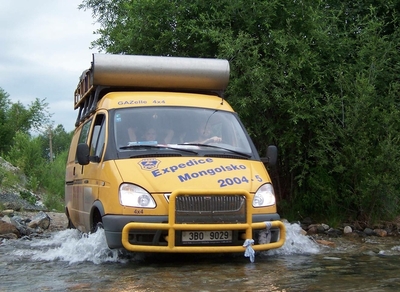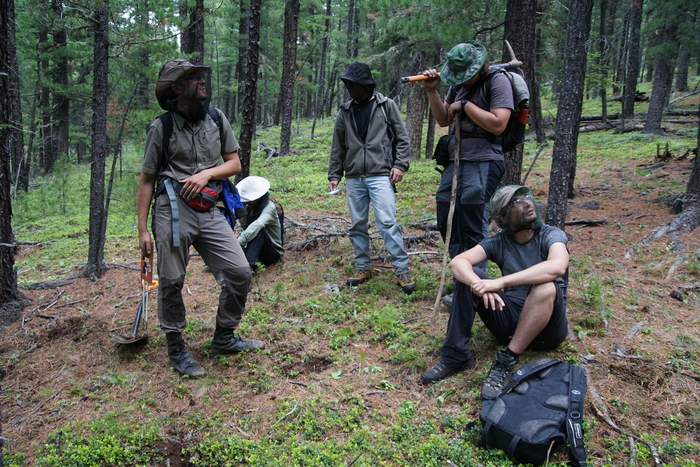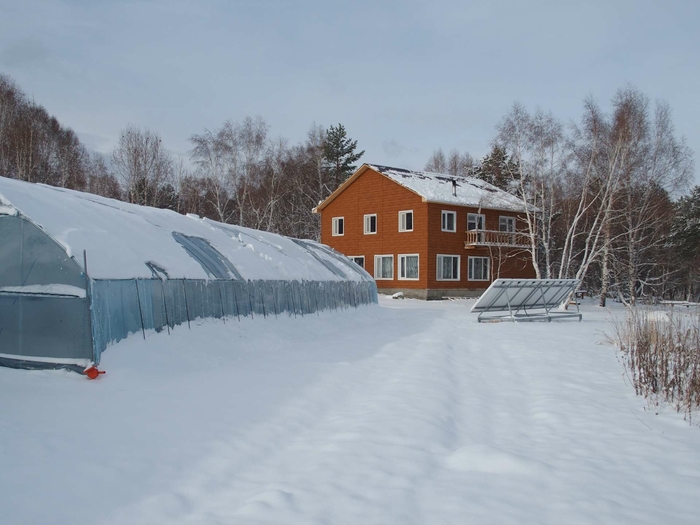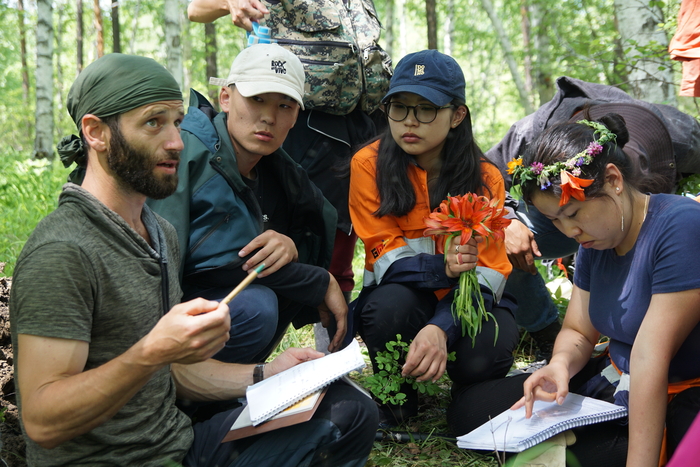Introduction
 The Forests for Mongolia website unites and presents forestry and other environmentally oriented activities in Mongolia implemented over the long term by Mendel University in Brno and, within the projects Development of forests and gene pool of local forest tree ecotypes in Mongolia and Mongolian forestry in development: advanced expertise in forest planning and management, also by the Institute for Forest Management Brandýs nad Labem and the company Forest for Mongolia.
The Forests for Mongolia website unites and presents forestry and other environmentally oriented activities in Mongolia implemented over the long term by Mendel University in Brno and, within the projects Development of forests and gene pool of local forest tree ecotypes in Mongolia and Mongolian forestry in development: advanced expertise in forest planning and management, also by the Institute for Forest Management Brandýs nad Labem and the company Forest for Mongolia.
How did it all start?
 It all started with student expeditions focused on geology. The first student expedition to Mongolia took place in 2000 and the main role in it was initiated by Assoc. Mgr. Jindřich Kynický, Ph.D., then still a student at the Faculty of Science of Masaryk University in Brno. An important event for the realization and future continuation of the project was the initiation of cooperation with the Technical University in Ulaanbaatar (Mongolian University of Science and Technology) and with the domestic company Geotest Brno a. s. within the framework of projects to assist developing countries in the search for industrial and potable resources in desert and semi-desert environments at the OECD and the United Nations.
It all started with student expeditions focused on geology. The first student expedition to Mongolia took place in 2000 and the main role in it was initiated by Assoc. Mgr. Jindřich Kynický, Ph.D., then still a student at the Faculty of Science of Masaryk University in Brno. An important event for the realization and future continuation of the project was the initiation of cooperation with the Technical University in Ulaanbaatar (Mongolian University of Science and Technology) and with the domestic company Geotest Brno a. s. within the framework of projects to assist developing countries in the search for industrial and potable resources in desert and semi-desert environments at the OECD and the United Nations.
During the first expedition, its members travelled through almost 2/3 of the Mongolian territory, searching for and discovering sites of occurrences of rocks, minerals, geological formations and palaeontological findings important for further research. The outputs of the first two expeditions under the auspices of Masaryk University in Brno include 8 semester and bachelor theses, 2 master theses and 3 student conferences.
The continuation of the expeditions and the growing importance of the project
 The third expedition was again initiated by Assoc. Mgr. The expedition focused on a detailed investigation of selected mineralogically interesting and often unexplored sites in southern and western Mongolia. In the context of this expedition, other thesis topics were developed, this time addressing environmental issues, especially in relation to sustainable development of rural areas, forests and water resources in the cold regions of northern Mongolia.
The third expedition was again initiated by Assoc. Mgr. The expedition focused on a detailed investigation of selected mineralogically interesting and often unexplored sites in southern and western Mongolia. In the context of this expedition, other thesis topics were developed, this time addressing environmental issues, especially in relation to sustainable development of rural areas, forests and water resources in the cold regions of northern Mongolia.
Since the third expedition, she has taken the initiative with Assoc. In the years 2005-2011, the largest ever conferences were held with the participation of representatives from the Ministry of Industry and Trade, the Czech-Mongolian Chamber of Commerce, the Mining Union, representatives of the Mongolian Embassy and a number of domestic and foreign partners, where not only their own results were discussed, but also the future possibilities of support and in general the future of Czech and Slovak foreign development aid to Mongolia.
The rise and dominance of forestry and environmental expeditions
 After a slight decline in expeditions, 2014 became a significant milestone. In this year, the expedition was prepared together with Canadian partners as the largest of all expeditions and consisted of 12 students. Due to the great diversity of the planned student research, focusing mainly on forest ecosystems but also partly on geology and environmental pollution, the team was also split into two during the expedition. With the geological section went Assoc. Mgr. Jindřich Kynický, Ph.D. to carry out research in the Gobi Desert, while the forestry team was taken over by Ing. David Juřička, Ph.D. and continued with it to the area of Lake Chövsgöl. This division of research led to the establishment of a new main thematic focus, which was confirmed by the following expeditions carried out in 2015, 2016 and 2017.
After a slight decline in expeditions, 2014 became a significant milestone. In this year, the expedition was prepared together with Canadian partners as the largest of all expeditions and consisted of 12 students. Due to the great diversity of the planned student research, focusing mainly on forest ecosystems but also partly on geology and environmental pollution, the team was also split into two during the expedition. With the geological section went Assoc. Mgr. Jindřich Kynický, Ph.D. to carry out research in the Gobi Desert, while the forestry team was taken over by Ing. David Juřička, Ph.D. and continued with it to the area of Lake Chövsgöl. This division of research led to the establishment of a new main thematic focus, which was confirmed by the following expeditions carried out in 2015, 2016 and 2017.
Since 2015, the field part of the project of student expeditions to Mongolia was led by Ing. David Juřička, Ph.D., with the main focus on the study of aridization of the landscape, permafrost functioning, forest regeneration, biotic and abiotic damaging factors in forests, but also, for example, overgrazing of steppes and environmental contamination. The results of the research were gradually published and presented, and on the basis of this and thanks to the support of the Embassy of the Czech Republic in Ulaanbaatar, it was possible to establish cooperation with other local and foreign partners.
Forestry project "Domogt"
 In 2015, the implementation of the project Development of forests and gene pool of local forest ecotypes in Mongolia under the auspices of the Czech Development Agency began. Within the framework of this project of the Institute for Forest Management Brandýs nad Labem, the Domogt forest nursery was built in the following two years, which became the centre of Czech forestry activities in Mongolia and a place for exemplary presentation of forestry management to both local and foreign visitors. The meeting of the MENDELU expedition team with the implementers of this project in the summer of 2017 initiated a cooperation that led to the preparation of joint educational projects and the advancement of our forestry work in Mongolia to the next level.
In 2015, the implementation of the project Development of forests and gene pool of local forest ecotypes in Mongolia under the auspices of the Czech Development Agency began. Within the framework of this project of the Institute for Forest Management Brandýs nad Labem, the Domogt forest nursery was built in the following two years, which became the centre of Czech forestry activities in Mongolia and a place for exemplary presentation of forestry management to both local and foreign visitors. The meeting of the MENDELU expedition team with the implementers of this project in the summer of 2017 initiated a cooperation that led to the preparation of joint educational projects and the advancement of our forestry work in Mongolia to the next level.
Educational projects and the start of the STREAM project
 A new phase of MENDELU activities in Mongolia started in 2018 with the formation of a team consisting of an expedition core consisting of Ing. David Juřička Ph.D. and Ing. Václav Pecina, and a member of the "Domogt" team, which was Ing. Antonín Kusbach, Ph.D. Soon Ing. Jan Šebesta Ph.D. This team was involved in the implementation of Erasmus+ educational projects and the Forestry and Landscape Education Course in Mongolia in cooperation with Mongolian universities, namely the Mongolian University of Life Sciences and the German-Mongolian Institute for Resource and Technology. In parallel to these projects, A. Kusbach also carried out an expert project on behalf of Forest for Mongolia. The implementation of these projects and the deepening of cooperation with Mongolian partners, as well as the active support of the Embassy of the Czech Republic in Ulaanbaatar, have led to the preparation of a new project Sustainable Resilient Ecosystem and Agriculture Management in Mongolia (STREAM), which represents a further advance of our work in Mongolia and the implementation of our know-how in forestry practice.
A new phase of MENDELU activities in Mongolia started in 2018 with the formation of a team consisting of an expedition core consisting of Ing. David Juřička Ph.D. and Ing. Václav Pecina, and a member of the "Domogt" team, which was Ing. Antonín Kusbach, Ph.D. Soon Ing. Jan Šebesta Ph.D. This team was involved in the implementation of Erasmus+ educational projects and the Forestry and Landscape Education Course in Mongolia in cooperation with Mongolian universities, namely the Mongolian University of Life Sciences and the German-Mongolian Institute for Resource and Technology. In parallel to these projects, A. Kusbach also carried out an expert project on behalf of Forest for Mongolia. The implementation of these projects and the deepening of cooperation with Mongolian partners, as well as the active support of the Embassy of the Czech Republic in Ulaanbaatar, have led to the preparation of a new project Sustainable Resilient Ecosystem and Agriculture Management in Mongolia (STREAM), which represents a further advance of our work in Mongolia and the implementation of our know-how in forestry practice.